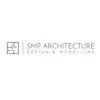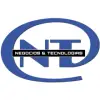
ZBrush Retopology Plugin Development
$1500-3000 USD
Mbyllur
Postuar 26 days ago
$1500-3000 USD
Paguhet në dorëzim
I'm in need of a skilled software developer, preferably with experience in creating plugins for ZBrush. The project consists of developing a retopology plugin which includes both automatic and manual retopology tools. It should integrate seamlessly with ZBrush's existing tools and provide preset retopology for common assets such as hands, faces, hair and legs.
Key Features:
- A combination of automatic and manual retopology tools.
- Seamless integration with ZBrush's existing toolset.
- Preset retopology for various assets.
- Capability to map existing meshes onto a model using guides.
- Functionality for patches around knees, elbows, and cloth folds.
- An operation model similar to Maya's Quad Draw, as an active layer overlay.
- Include symmetry support for retopology tasks to speed up the workflow.
- Provide robust undo and redo functionality to correct mistakes easily.
- Include basic UV mapping tools for preparing models for texture painting.
- Advanced edge loop control for better topology flow around complex areas.
- Allow users to create and save their own retopology presets for reuse.
- Provide real-time feedback on topology changes to assist in making precise adjustments.
- Ability to handle high-resolution models without significantly impacting performance.
The ideal candidate should have a strong background in 3D modeling and ZBrush, as well as proficient programming skills to create a robust and efficient plugin. Experience with retopology processes and tools will be highly beneficial.
The plugin should support multiple versions of ZBrush, ensuring compatibility with at least the last 3 versions. The plugin should be developed using Python. The expected timeline for this project is 6 months. The plugin should be available for direct download from a secure link. Ensure compatibility with Windows operating systems.
ID e Projektit: 38886567
Rreth projektit
84 propozime
Projekt në distancë
Aktive 23 days ago
Po kërkoni të fitoni para?
Përfitimet e ofertës për Freelancer
Vendosni buxhetin dhe afatin tuaj
Paguhuni për punën tuaj
Përshkruani propozimin tuaj
Është falas të regjistrohesh dhe të bësh oferta për punë
84 profesionistët e pavarur ofrojnë mesatarisht $2 314 USD oferta për këtë punë

4,9
(580 përshtypje)
8,9
8,9

4,9
(131 përshtypje)
8,9
8,9

4,9
(161 përshtypje)
8,1
8,1

4,9
(175 përshtypje)
7,9
7,9

4,8
(308 përshtypje)
7,3
7,3

5,0
(137 përshtypje)
7,2
7,2

5,0
(13 përshtypje)
7,2
7,2

5,0
(74 përshtypje)
6,9
6,9

5,0
(19 përshtypje)
6,9
6,9

5,0
(104 përshtypje)
7,1
7,1

5,0
(19 përshtypje)
6,4
6,4

5,0
(13 përshtypje)
6,1
6,1

4,9
(20 përshtypje)
5,7
5,7

4,5
(76 përshtypje)
6,2
6,2

5,0
(8 përshtypje)
5,7
5,7

4,8
(39 përshtypje)
5,4
5,4

5,0
(14 përshtypje)
5,3
5,3

5,0
(6 përshtypje)
5,3
5,3

5,0
(2 përshtypje)
5,4
5,4

4,6
(18 përshtypje)
5,6
5,6
Rreth klientit

Sacramento, United States
0,0
0
Anëtar që nga dhj 12, 2024
Verifikimi i klientit
Punë të ngjashme
$8-15 USD / orë
$15-25 USD / orë
₹12500-37500 INR
₹12500-37500 INR
₹750-1250 INR / orë
$250-750 USD
$30-250 AUD
$8-15 AUD / orë
₹12500-37500 INR
$75-150 USD
€30-250 EUR
₹1500-12500 INR
$15-25 USD / orë
₹600-2000 INR
£20-250 GBP
₹1500-12500 INR
$200-230 USD
$15-25 USD / orë
$250-750 USD
$10-30 CAD
Faleminderit! Ne ju kemi dërguar me email një lidhje për të kërkuar kredinë tuaj falas.
Ndodhi një gabim gjatë dërgimit të email-it tuaj. Ju lutemi provoni përsëri.
Po ngarkohet shikimi paraprak
Leja u dha për Geolocation.
Seanca e hyrjes ka skaduar dhe ke dalë. Hyr sërish.
























